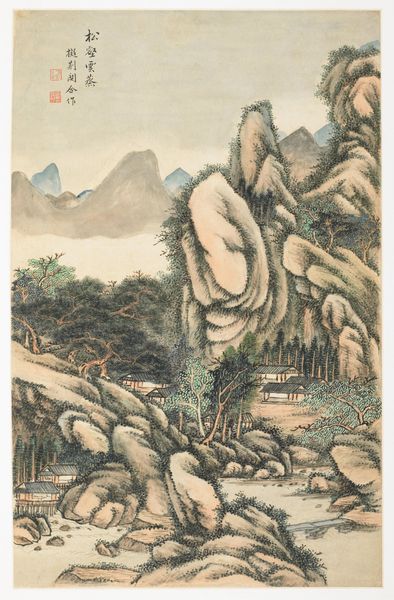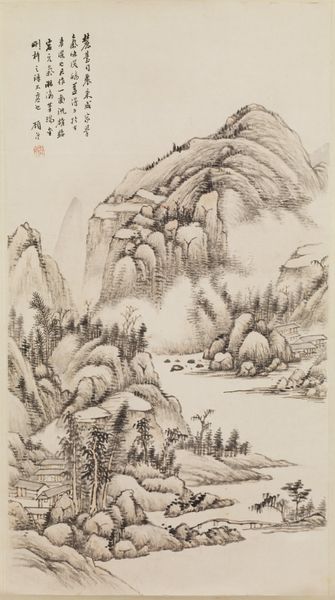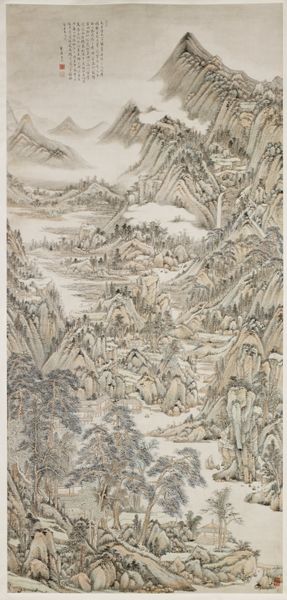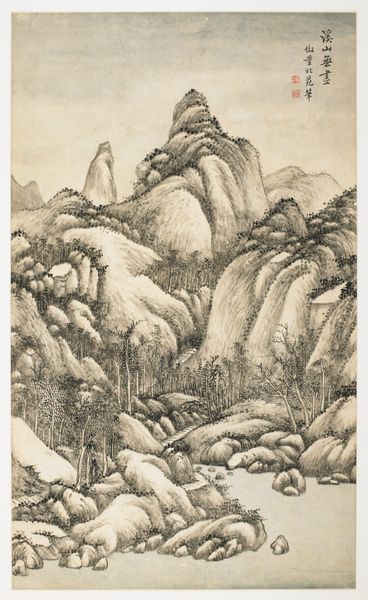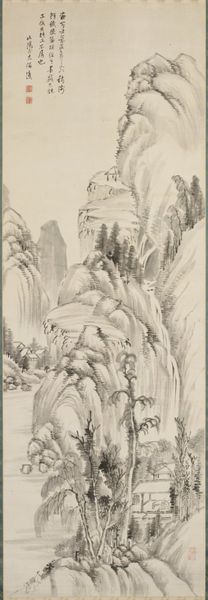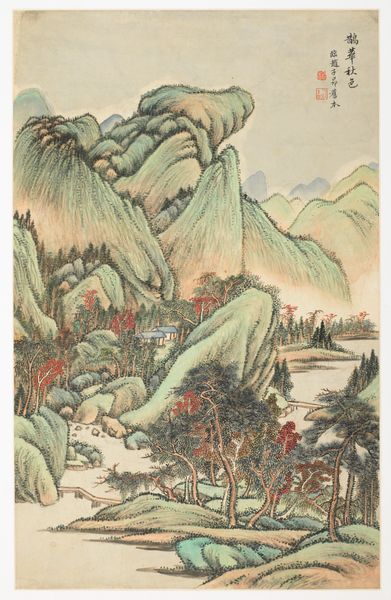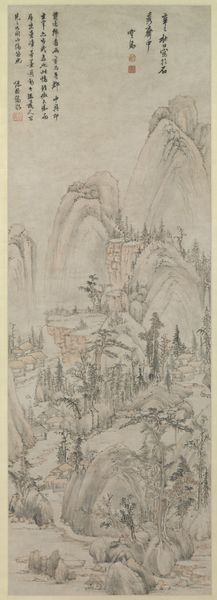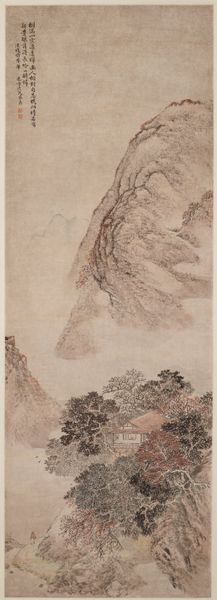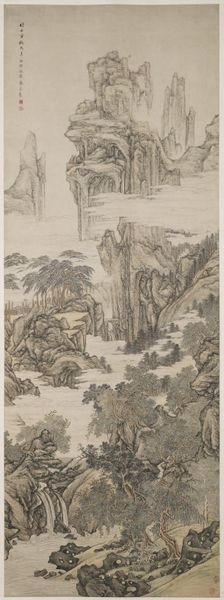
Dimensions: Image: 37 1/2 × 18 1/2 in. (95.3 × 47 cm) Overall with mounting: 92 5/8 × 25 1/4 in. (235.3 × 64.1 cm) Overall with knobs: 92 5/8 × 29 in. (235.3 × 73.7 cm)
Copyright: Public Domain
Editor: Here we have Wang Yuanqi’s "Landscape for Zhanting," created around 1710, using ink and tempera. There's something incredibly serene about the layering of geometric forms. How would you interpret this work within its historical context? Curator: It’s important to see Yuanqi’s landscapes as a statement about artistic lineage and power. The literati painters, like Wang Yuanqi, wielded significant cultural influence, especially within the Qing dynasty court. Editor: Could you elaborate? Curator: Absolutely. Wang Yuanqi positioned himself, and was seen by others, as an inheritor of the traditions of earlier masters, like Dong Yuan and Ju Ran. He wasn’t just painting a landscape; he was invoking centuries of artistic authority and using that pedigree to solidify the prestige of the imperial court, which acted as the great patron. Editor: So, the “serene” landscape is actually a manifestation of socio-political power? It makes me question how accessible this display of authority would have been to wider audiences. Curator: Precisely! And who were the intended viewers? Was this piece designed for public exhibition, or primarily for private contemplation within the scholar’s studio, where cultural and political elites shaped opinions and consolidated authority? Editor: That gives me a lot to consider. The image becomes more complex when thinking about how culture influences artistic output. Curator: Exactly. Looking beyond just aesthetics lets us engage with the potent political narratives at play, transforming our view from one of natural scenery to one reflecting imperial power and artistic influence.
Comments
No comments
Be the first to comment and join the conversation on the ultimate creative platform.
